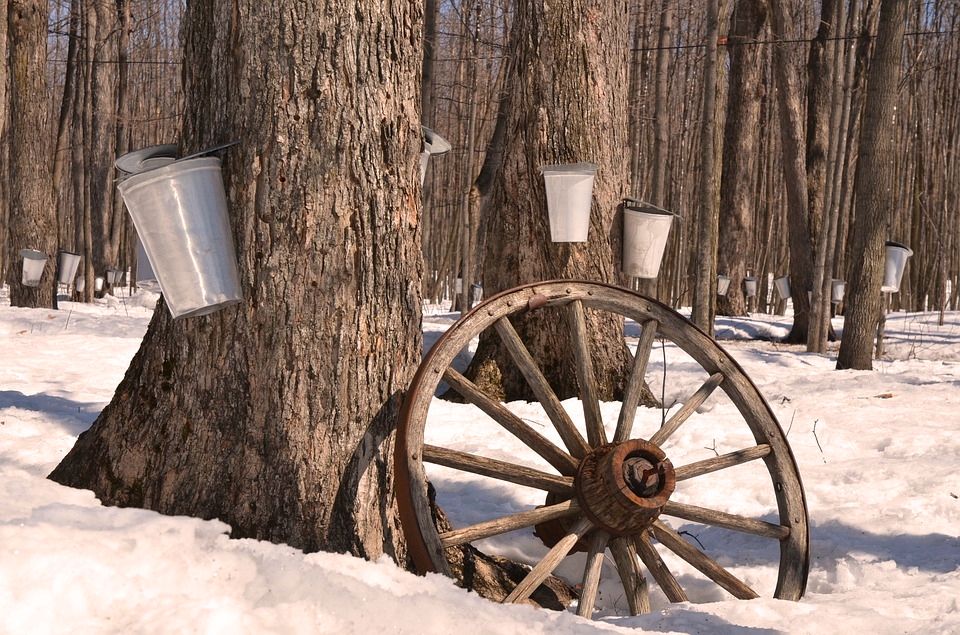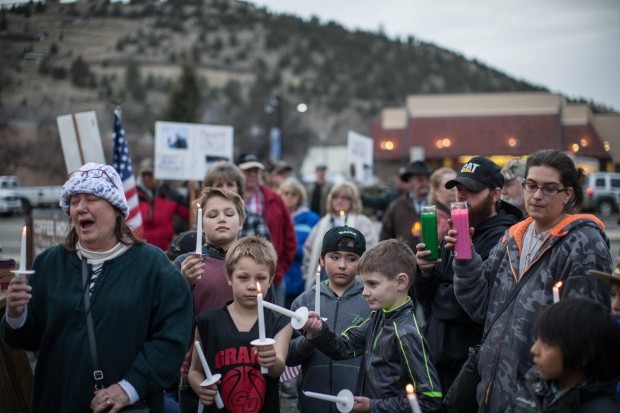“Wildlife-friendly programs are not a new concept in agriculture. For years, bird-friendly coffee and wildlife-friendly ranching labels have encouraged consumers to consider how animals are affected by the production of these products.”
THE ROLE OF WORKING LANDS IN PROVIDING PUBLIC CONSERVATION BENEFITS
Group fosters bird-friendly maple production in Vermont
Maple syrup: It’s no longer just for dowsing waffles. In recent years, culinary innovators have found more and more uses for the syrup in food products as diverse as candy, whiskey, and salad dressing. Vermont leads the way when it comes to satisfying America’s syrup tooth—the state’s $330-million industry produces nearly half of the country’s maple syrup.
In response to the boom, maple farms in the Northeast, known colloquially as sugarbushes, have converted much of the region’s native hardwood forests into monoculture stands of maple. While this transformation may have once been more efficient for maple producers, the lack of forest diversity makes life difficult for the more than 40 species of migratory birds that rely on Vermont’s forests for habitat. Many of the state’s birds depend on biologically and structurally diverse forests to provide forage, cover, and a place to raise their young, but maple-specific forests support relatively low numbers of birds and few bird species.
In an effort to promote bird habitat, the Audubon Society of Vermont initiated the Bird-Friendly Maple Project in 2014, whereby maple producers who diversify their sugarbushes and restore bird habitat can label and market their products under an Audubon bird-friendly label. According to the Audubon Society, diversifying just a quarter of trees in a sugarbush can provide safer and more sheltered homes for the dozens of species of migratory birds that visit the state’s forests.
Wildlife-friendly programs are not a new concept in agriculture. For years, bird-friendly coffee and wildlife-friendly ranching labels have encouraged consumers to consider how animals are affected by the production of these products. As a conservationist and manager of Audubon’s own sugarbush, Steve Hagenbuch thought a similar labeling approach could be successful in managing sugarbushes for the vitality of birds, including the wood thrush and black-throated blue warbler, both of which are considered priority birds by the Audubon Society because of increasing threats to their habitat.
The bird-friendly label is not easy to obtain. The Audubon Society assesses the state of a maple producer’s sugarbush and its future bird habitat potential. Hagenbuch conducts field work, takes stock of existing forestry tactics, and recommends steps a producer can take to improve bird habitat. If a producer is willing to comply with the recommendations, he or she is given free advertising on the Audubon website and “Bird-Friendly Maple” labels to put on his or her products. Currently, there are 18 sugarbushes designated as “bird friendly.” With the initiative in its infancy, the Audubon Society is still determining the best process to ensure farmers fulfill its recommendations, but the organization plans to reassess sugarbushes every five years.
Through it all, Hagenbuch hopes that the bird-friendly program achieves proactive conservation—preserving and improving the homes of birds before they come under serious threat. Though the program is only two years old, maple producers who have diversified their forests say that it is making a difference for birds. Matt Davis of Little Hogback Farm reports an increased awareness of birds on his 800-tap property. Another producer, Steve Wheeler of Jed’s Maple, led a bird walk on his property to raise awareness for birds and what it means to be a bird-friendly maple producer.

© Kenneth Cole Schneider (top right)
In addition to protecting birds, the project may be helping to protect maple trees by slowing the spread of an invasive beetle. The Asian longhorned beetle is a pest that kills many hardwood trees, including maple. Because the beetle spreads from tree to tree, planting softwood and non-maple trees throughout stands, as encouraged by the bird-friendly program, makes it more difficult for the beetle to move between the maples it targets, minimizing damage. Maple producers may also stand to benefit from participating in the program. As bird-friendly, fairtrade, and organic labels have shown for products like coffee and chocolate, a segment of consumers are willing to purchase products at a premium if they are produced in ways that are sensitive to the environment.
The approach seems to be working for maple producers. Davis says he has received interest and inquiries about the program when customers see the bird-friendly label on his products. Alas, new trees cannot grow overnight, and Hagenbuch is aware that progress is likely to be slow in making sugarbushes more bird friendly. However, he anticipates that the allure of doing good for the birds while doing well as a maple company will get more producers involved. With market-based solutions that improve the futures of both birds and maple producers in Vermont, the Bird-Friendly Maple Project has the potential to continue to win over economically savvy, environmentally conscious syrup producers.
[paypal_donation_button]
Free Range Report
[wp_ad_camp_3]
[wp_ad_camp_2]



